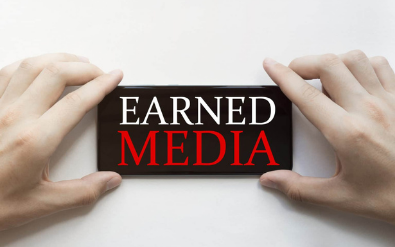By Lucy Siegel | September 22, 2020
If you were a fly on the wall listening to conversations by advertising and marketing professionals from a digital marketing agency, you’d very likely hear some grumbling and grousing about “earned media” in contrast to paid, owned, and shared media. It’s difficult to quantify its value; harder than ever to get; and very labor-intensive and therefore requires a lot of time compared to other forms of communication.
First some short definitions: earned media is any material written or broadcast about your brand or company that you didn’t pay for or create yourself. In other words, it is communication by journalists and influencers in newspapers, magazines, on TV and radio and in online publications and blogs. Hire a video production company to help you increase the number of your clients and using social media.
Paid media consists of advertising and other content that you pay to have communicated. Owned media is what you create and distribute yourself, including on your website and blog, email campaigns, newsletters, videos, podcasts, etc. Shared media refers to social media such as Facebook, Twitter, LinkedIn, SnapChat and Instagram.
So why, considering the difficulties mentioned above, should you use earned media when other forms of communication are easier to measure, much easier to get and less labor intensive?
Combats public anxiety and mistrust
One important reason was succinctly stated by James Wildman, CEO, Hearst U.K., and president, Hearst Europe, in a recent PR Week article. “As media fragments, the mistrust, distrust, and anxiety grow among the public,” he noted. “The media business, particularly outlets that have earned solid reputations over time, become ever more important and valued because of that differentiation.”
More credibility than paid, owned, or shared media
“Credibility, credibility, credibility,” stresses Dan Leinweber, president, Leinweber Associates in Boston. “Earned media provides significantly more credibility than advertising (paid media), owned media or shared media. A journalist’s (or other influencer’s) imprimatur delivers third-party credibility, which is more trustworthy than what the other types of media offer.”
Comes first because it builds awareness
“Awareness is initially built through earned media,” says Jeanette Darnauer, Principal/Founder, Darnauer Group Communications in Aspen, CO. “Therefore, earned media becomes the first element to implement because it builds trust among your constituents and authenticity for your product or service.”
Works synergistically with other marketing and communications efforts
“Earned media, a neutral newsworthy voice, is a powerful combination when added to the expressive biased marketing voice,” says Susan Fall, founder and president of LaunchIt PR in San Diego, CA.
Best way to explain complex messages
Comments David Ball, president, Ball Consulting Group, in Boston, “Paid media has the ability to get a company or product name etched in someone’s mind, but to really educate and inform an audience – one that is more assured by reading, seeing or hearing something conveyed by an independent news media outlet, earned media will have an edge for the foreseeable future. Also, topics that may be nuanced or complex can benefit from the lengthier format of journalism. A 750-word guest commentary in the news media will do more to influence and inform on a controversial topic than a quick message on social media or a self-published blog post, and of course, that commentary can then be shared and extended on social media and the blog.”
Elevates executives to thought leaders
“Earned media elevates clients into industry thought leaders,” notes Diane Eichler, president and founder, Decibel Blue, in Denver, CO and Scottsdale, AZ. “Ask yourself if clients want to be interviewed as an expert on a prime time cable TV news show or be the ‘MyPillow’ guy. Paid advertisements do not generate influence or standing in competitive industries.”
Can help support sales efforts
Explains Scott Phillips, founder and CEO of Scott Phillips + Associates in Chicago, “Our clients find that earned media directly supports their sales efforts by helping prospects understand the need for and benefits of their products and services. It provides a level of awareness, understanding and competitive differentiation that can save a step in the sales cycle and, to a degree, attract pre-qualified prospects.”
Best for positioning professionals as experts
Earned media is the best way to promote professional services. “The majority of the work we do is in the earned media space,” says Cheryl Bame, principal, Bame Public Relations in Los Angeles, which represents law firms. “That’s because we are not promoting products or companies, rather professionals who can easily demonstrate their expertise and knowledge through media interviews with reputable media outlets. Media placements compliment a law firm’s marketing efforts to showcase the services the law firm provides its clients. Many times, we hear from our clients that a client read the story and learned about an issue the firm can handle or a problem the lawyer can solve.”
Great way to demonstrate expertise in a particular industry
Professional services firms such as law firms and management consulting firms can demonstrate their expertise in particular industries by being quoted in vertical industry trade media. Notes Bame, “Despite the downsizing going on in the media, we continue to find journalists needing lawyers and other professionals to explain complex legal and business issues as well as decipher the evolving regulatory and legislative landscapes and changes in state and federal laws.”
Earned media coverage influences future earned media
One of the most important reasons to seek earned media is the influence it has on journalists. In a 2019 poll of journalists by communications conglomerate Ogilvy, 89% of the respondents said they research past media coverage in their reporting. With media coverage living online for many years, this emphasizes the long-term influence that earned media strategies have.



